Everyone agrees that the city of San Francisco is in a “doom loop” (see “San Francisco suffering ‘Doom Loop’ amid large vacancy rates” (NBC, August 16), for example). Based on an August 2, 2023 visit, I think it is time to buy!
Office space that used to rent for $80 per square foot per year is now selling for $120 per square foot for the entire building (source). If rental rates go back to where they were, in other words, a buyer could make his/her/zir/their money back in two years.
There is no question that San Francisco is suffering from a deep self-inflicted wound of shutting down during coronapanic, which emptied out the city as the elite righteous fled to their suburban bunkers. The children who lost 1.5 years of school will live shorter lives, statistically, due to their curtailed education, and also suffer from a lower lifetime income. But that suffering and those premature deaths are a long way off. Meanwhile, the negative economic effects of lockdown are already priced into the real estate in SF.
What about the disorder, crime, etc. that gets so much press? Those aren’t being addressed because the elite neighborhoods aren’t significantly affected. The elites don’t care what happens in the Tenderloin because they never go there. Similarly, the elites in government shouldn’t be starved for property tax revenue because of Proposition 13. The typical building in San Francisco has been owned for a long time and is paying property tax on a 2005 value, for example. Thanks to inflation and a period of sustained economic growth before coronapanic, nominal property values are still higher than the Prop 13 tax value for the typical building. Thus, if a building sells, even for half what it was worth in 2019, the city’s rulers get a boost in revenue.
My theory is that eventually the crime and disorder will begin to hurt the elites and they’ll fight back with an oppressive clean-up like what Giuliani did in 1990s New York City. California Democrats have already shown that they will disregard all of their stated principles, such as providing housing for the unhoused, when expedient. Thus, nothing would stop a California Democrat from rounding up all of the unhoused in San Francisco, exporting them to “protection camps” in the Central Valley, and prosecuting and imprisoning anyone who commits what today are considered minor crimes.
In other words, San Francisco peasants don’t have to wait for some kind of improvement in government efficiency or other unrealistic change. The peasants’ lives will improved just as soon as the elites’ lives are touched. This is the same mechanism that operated in 2020. The elites had insulated themselves from every conceivable bad thing. They had schedule flexibility so they didn’t have to share the jammed roads with peasants. Their neighborhoods were untouched by crime. They had private jets and helicopters so they could move around freely. Then SARS-CoV-2 came along, a virus that had the potential to kill both the rich and the poor. The elites took previously unthinkable actions, such as closing schools for peasant children, in hopes of saving their own skins. Sweeping through the city and removing anyone living in a tent is a much less difficult policy to implement than locking down peasants and their school-age children for 1.5 years.
What are the forces in San Francisco’s favor? The U.S. is headed for a population of 450 million (Pew), entirely driven by low-skill immigration. The U.S. hasn’t succeeded in building any new cities. With a larger population, therefore, the price premium for an existing city should increase. Existing cities are at the center of transportation systems.
The huge flaws in my argument: Detroit and Baltimore. Despite massive population growth for the U.S. as a whole, these cities remain poor and depopulated. The Rust Belt cities of Upstate New York and Ohio also can be considered counterexamples. I don’t have an argument for why San Francisco can’t become Detroit.
A potential flaw in my plan to get rich by purchasing an office building is that residential can come back without commercial coming back. The academics who provided the necessary intellectual cover for elite policy in 2020, by saying that work from home was actually more productive than in-office work (i.e., the companies that paid rent on office space were stupid) have now been drafted to say that work from home is 10-20 percent less efficient (paper from 2023 versus paper from summer 2020; same author at same institution, but different Science as necessary). If we believe the 20% number, therefore, even a company with moderately paid workers might find it efficient to pay 50 Bidies per square foot per year in rent (assume 200′ per worker, that’s $10,000 per worker per year).
Leaving Detroit and Baltimore aside, there has to be some price at which renting office space in the heart of a city is a smart business move. It can be used for light manufacturing, for shipping and distribution, for collaboration, for running 3D printers, etc. The most desirable workers to hire are the young, who typically don’t have big comfortable houses in which to spend all day every day. Escaping roommates and a dark apartment to look out the window of a skyscraper should have some value to a 25-year-old.
Readers who are closer to San Francisco than I am: what’s your guess about the future of the city’s office space market?
Let’s look at some photos…
One of my first images, after getting out of BART, is a building-sized quote from a trans person (originated in state-sponsored PBS):
The Westfield Mall does indeed seem troubled, but not dangerous:
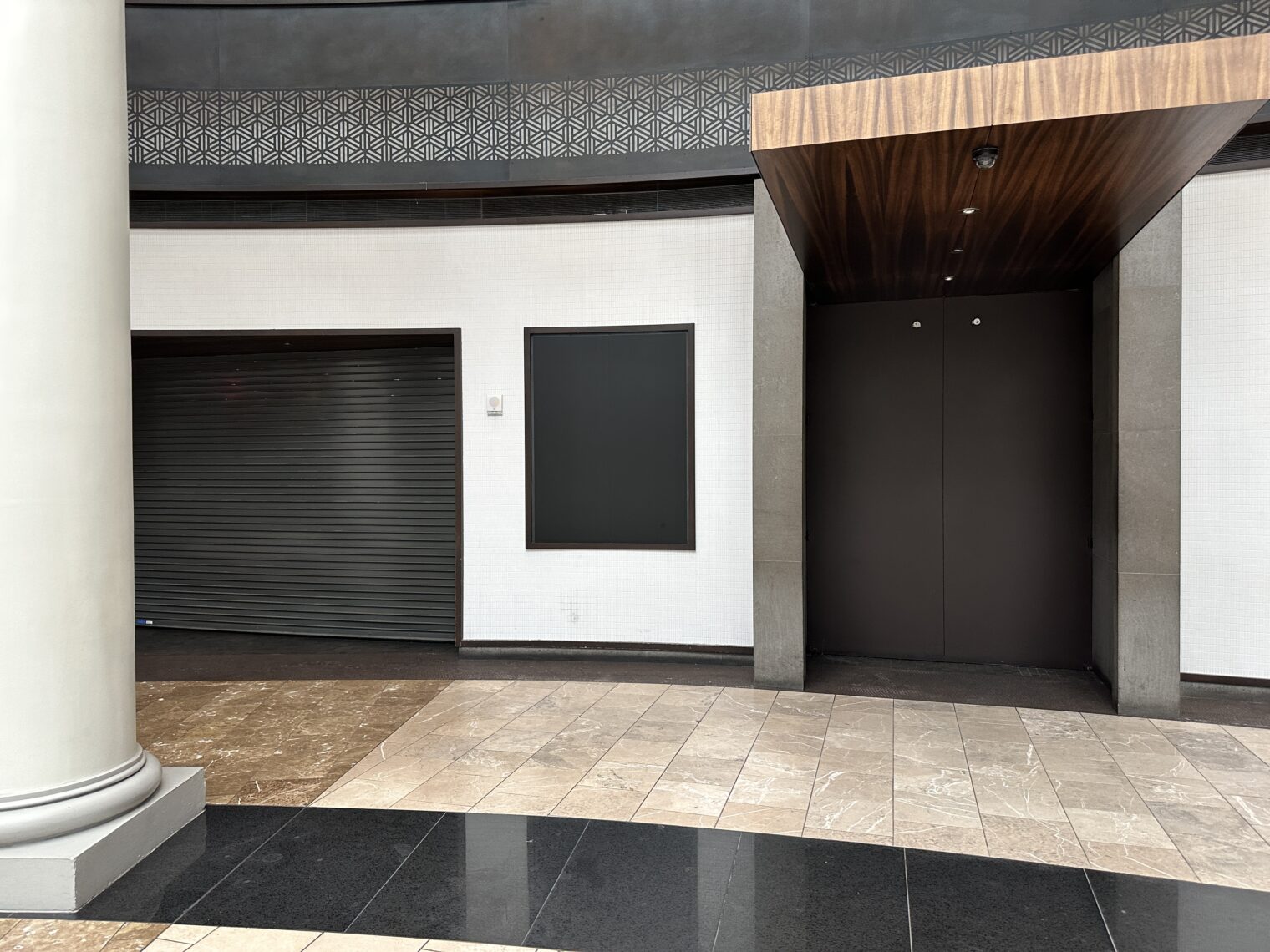
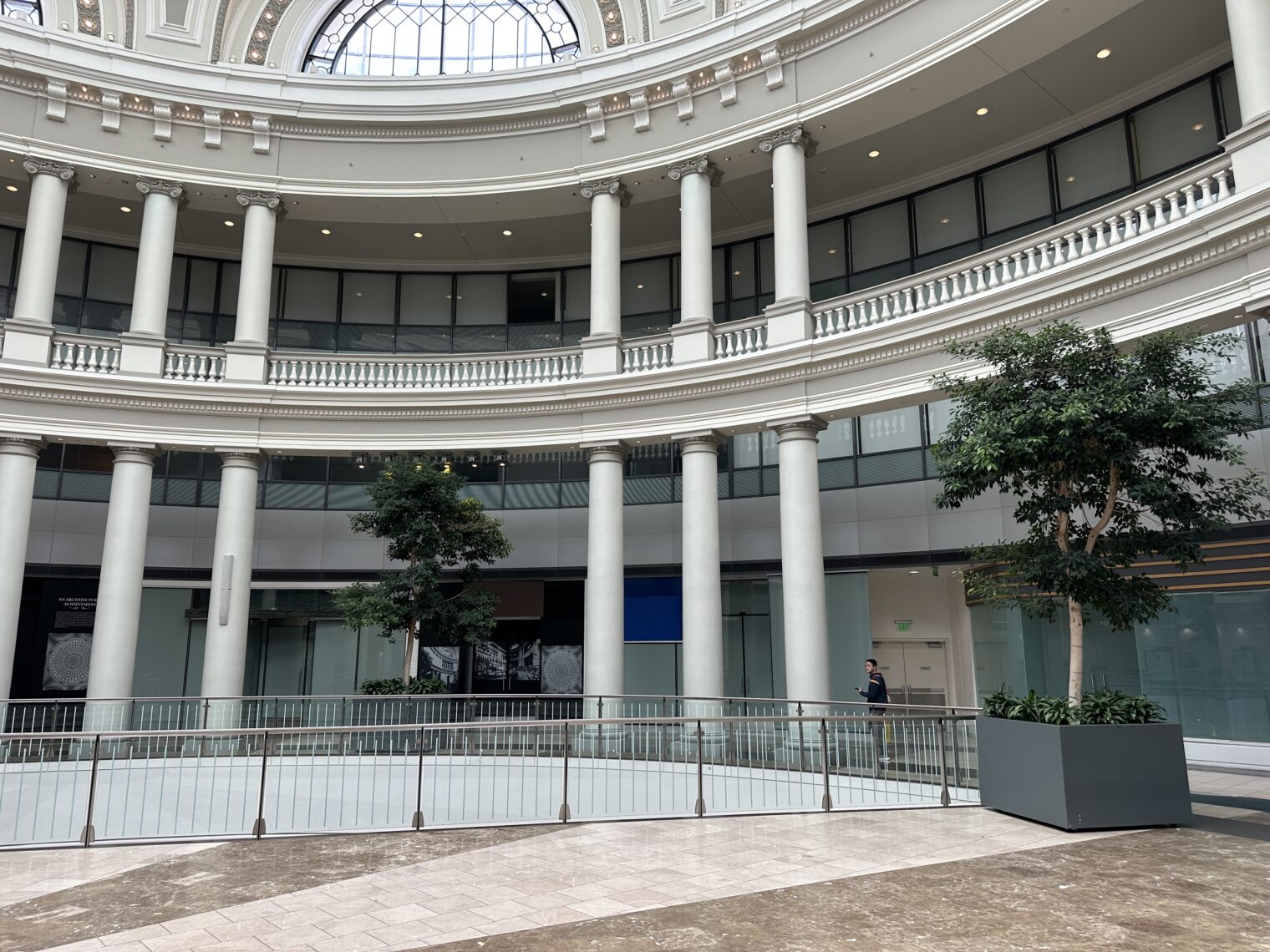
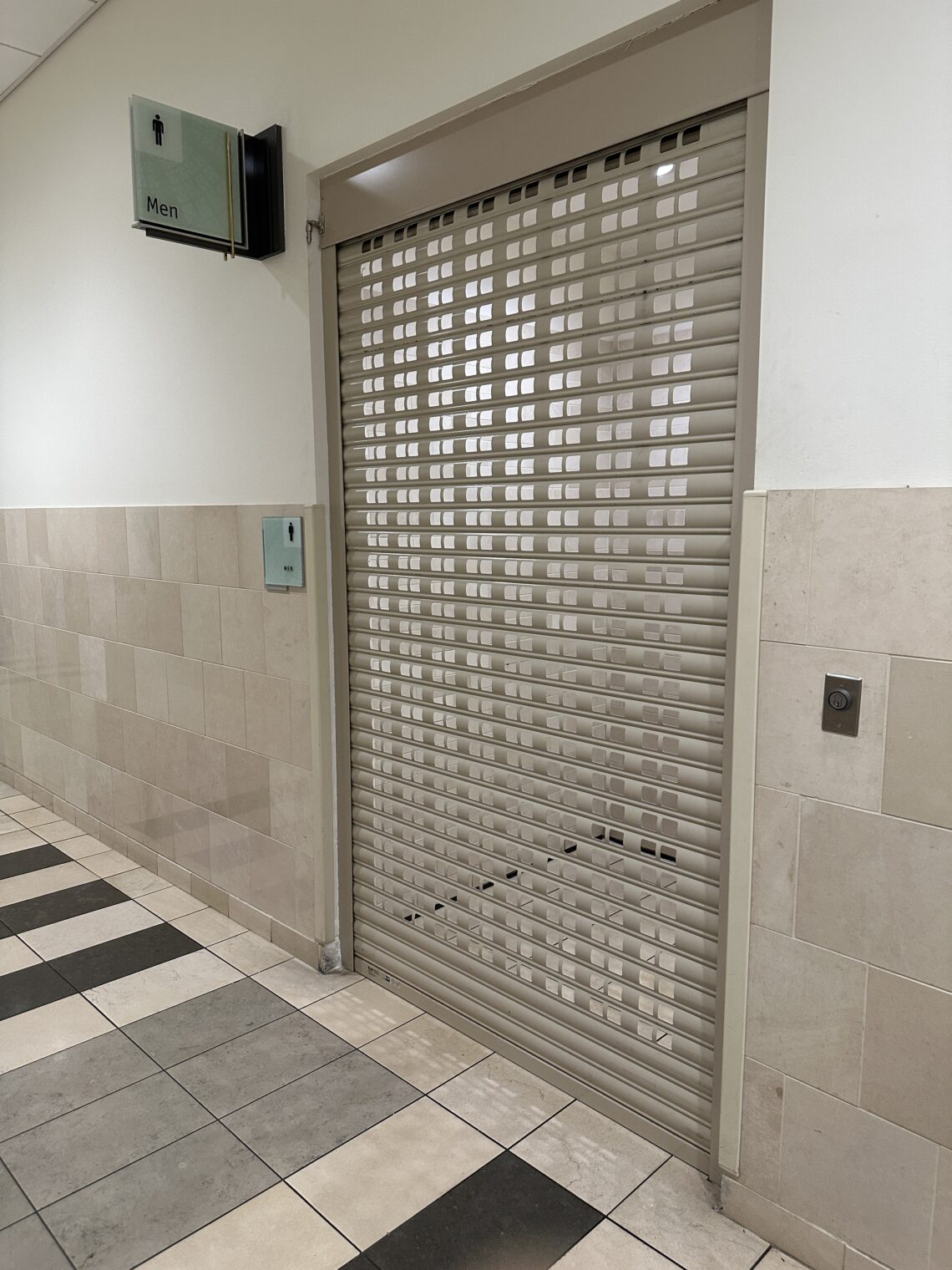
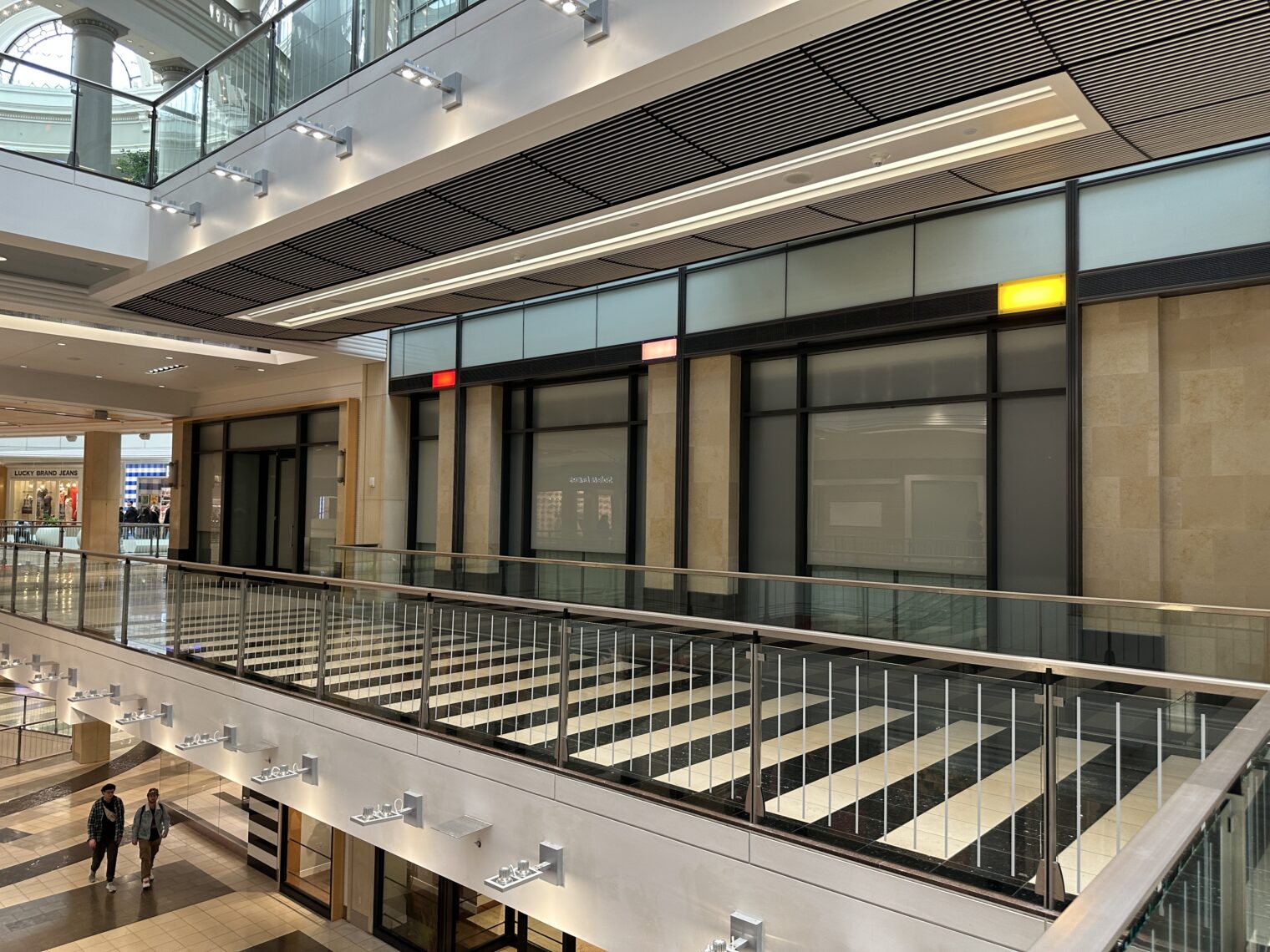
The elites can still buy their Rolex watches in the neighborhood and IKEA opens TODAY to serve the peasants.
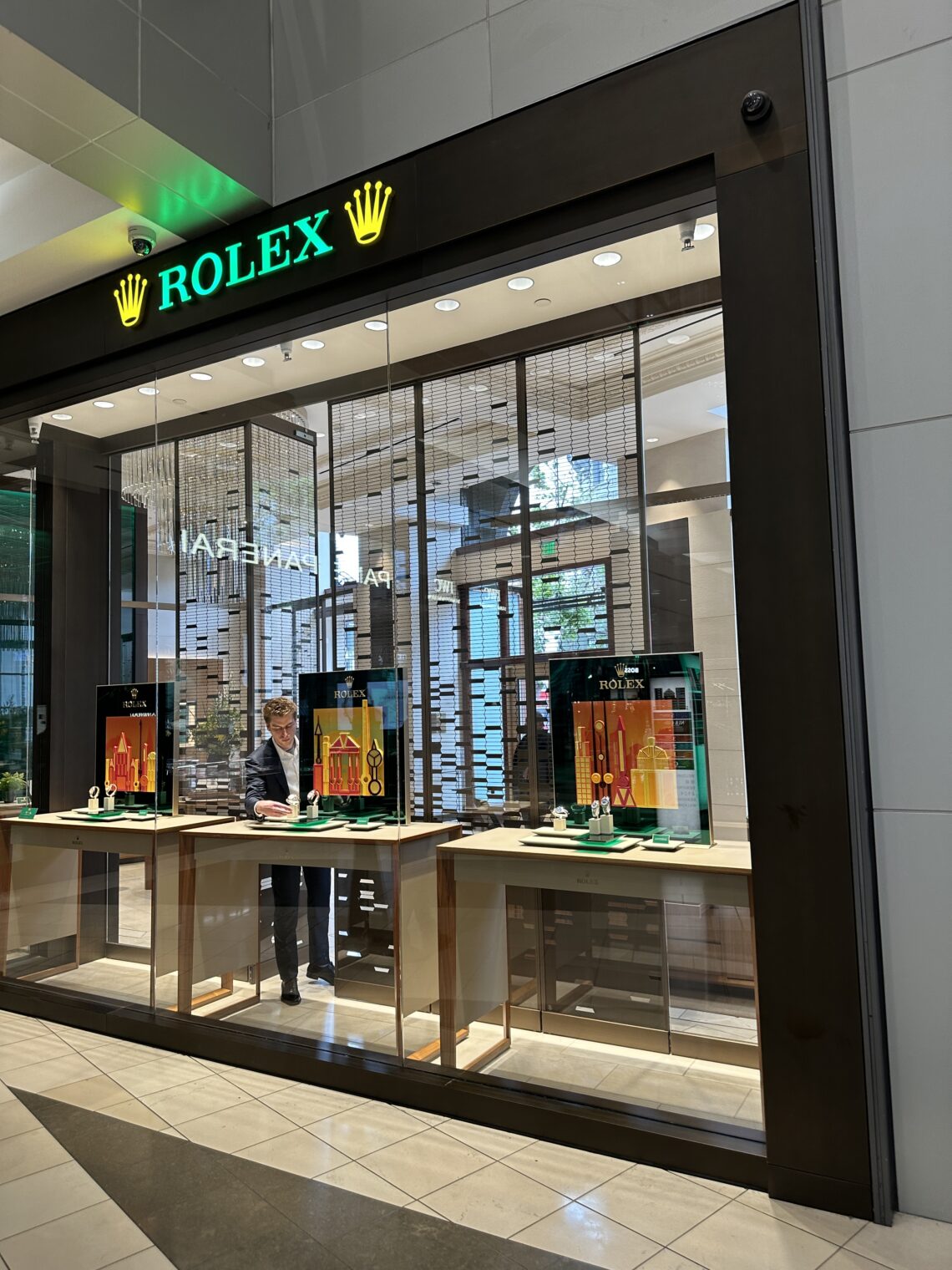

If you don’t like Swedish meatballs after shopping for no-longer-that-cheap furniture, you can get trans-enhanced-plus-intersex-circle chicken and rice:
I already covered my grip to the Transgender Cultural District in Tenderloin thoughts from San Francisco.
We circled back to find a Four Seasons Hotel next to some empty retail space and an ornate Hearst building:
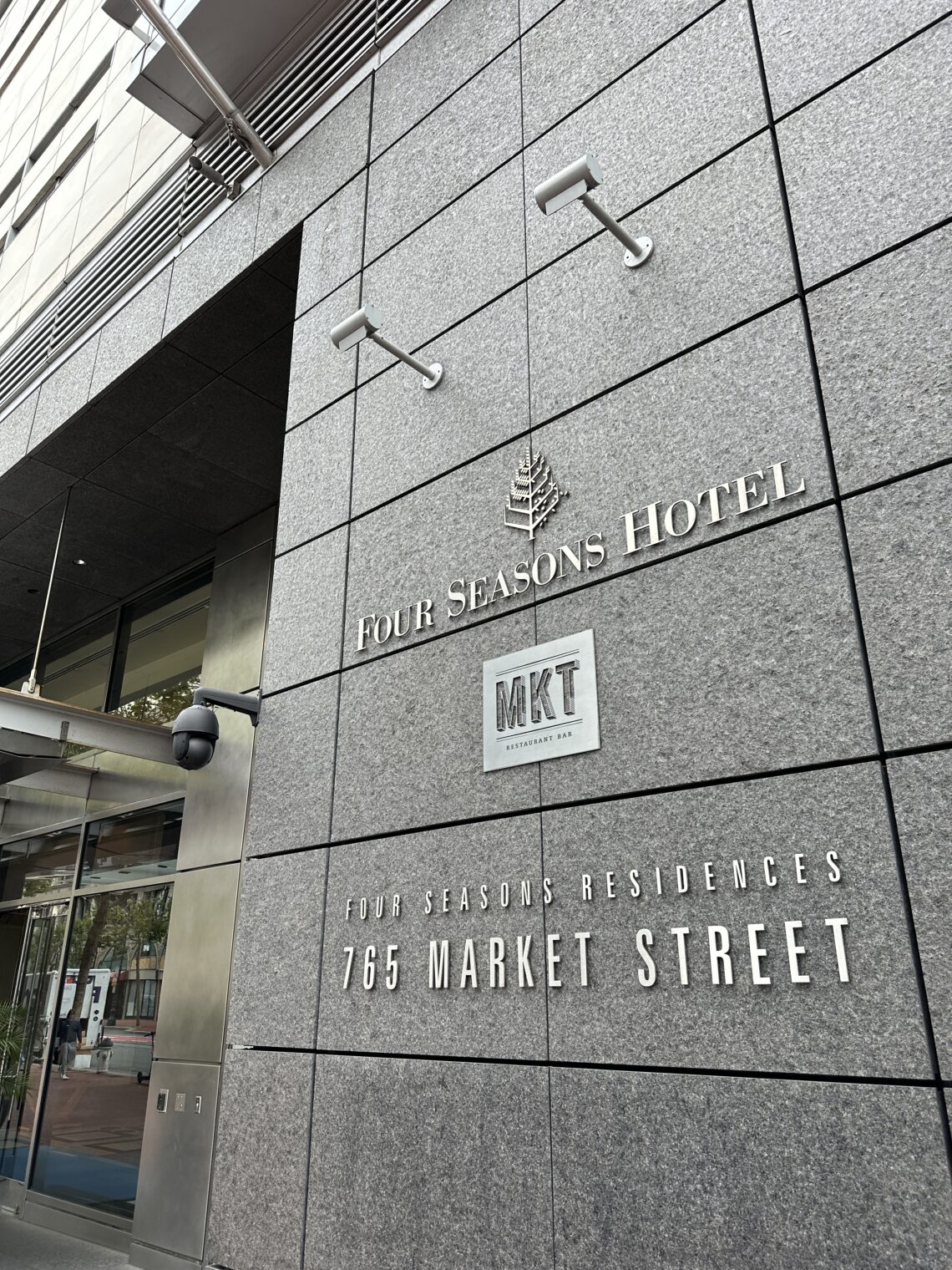
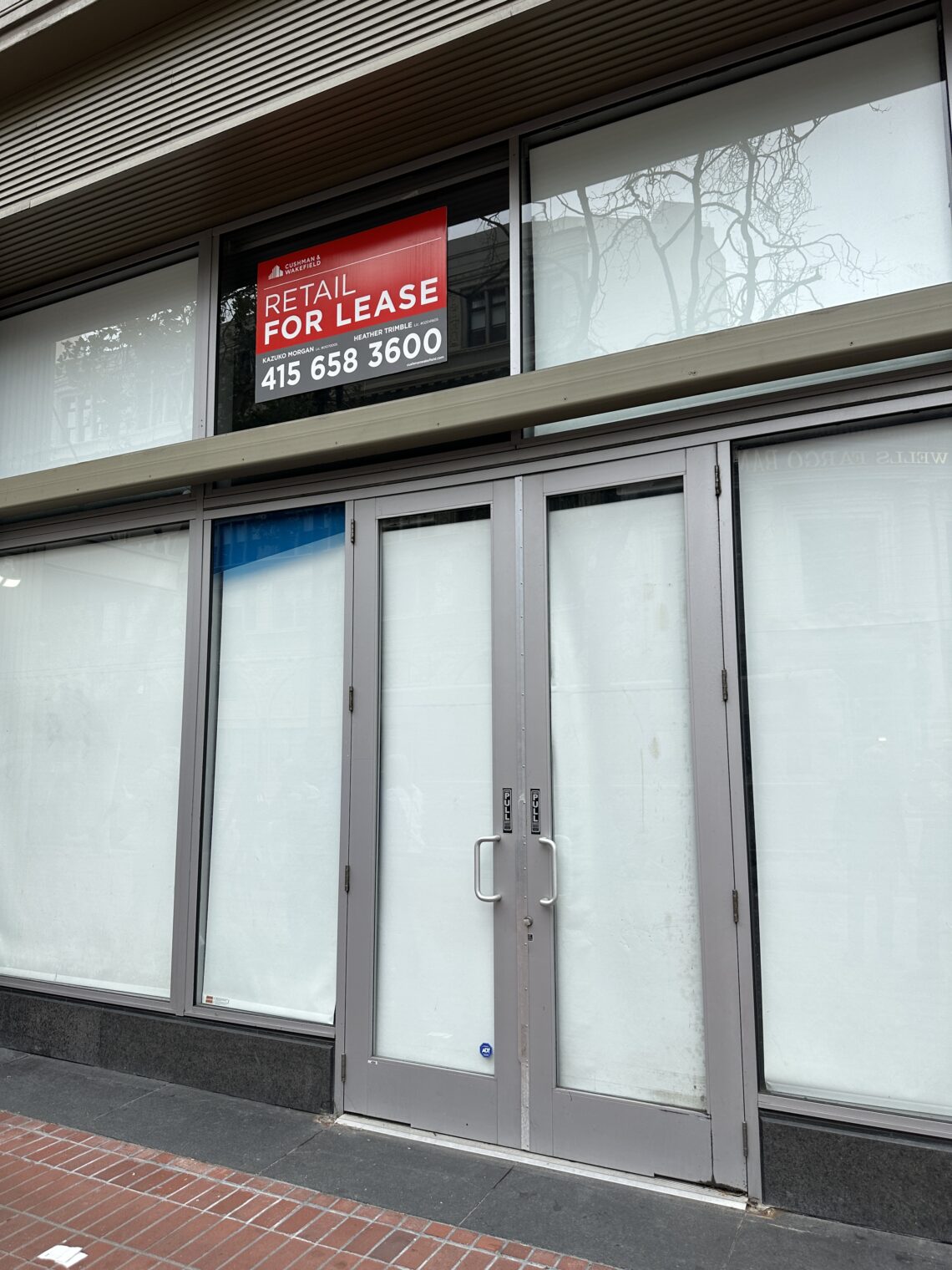
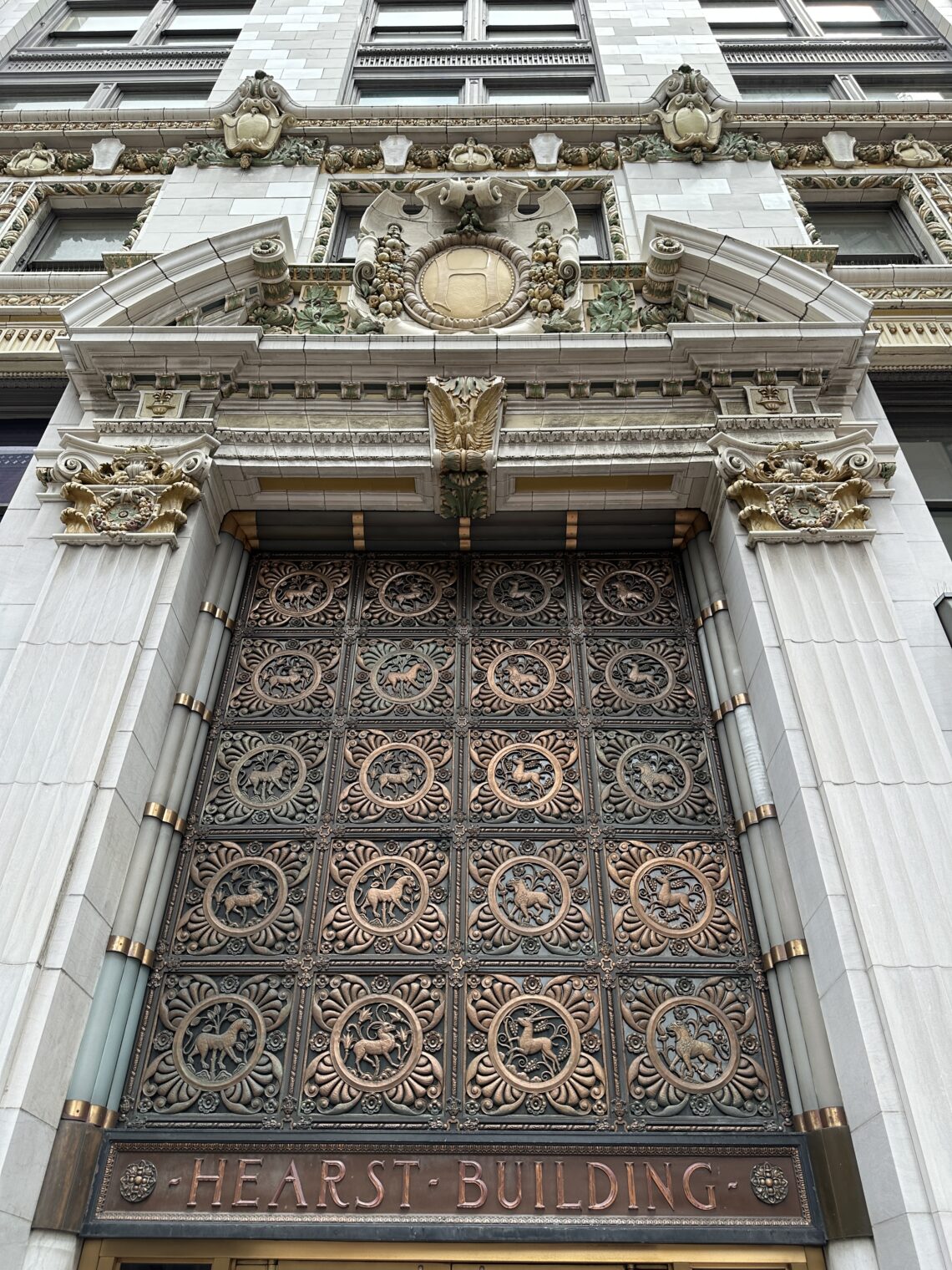
Pedestrians are righteously masked outdoors while the robotaxis clumsily poke their way through traffic:
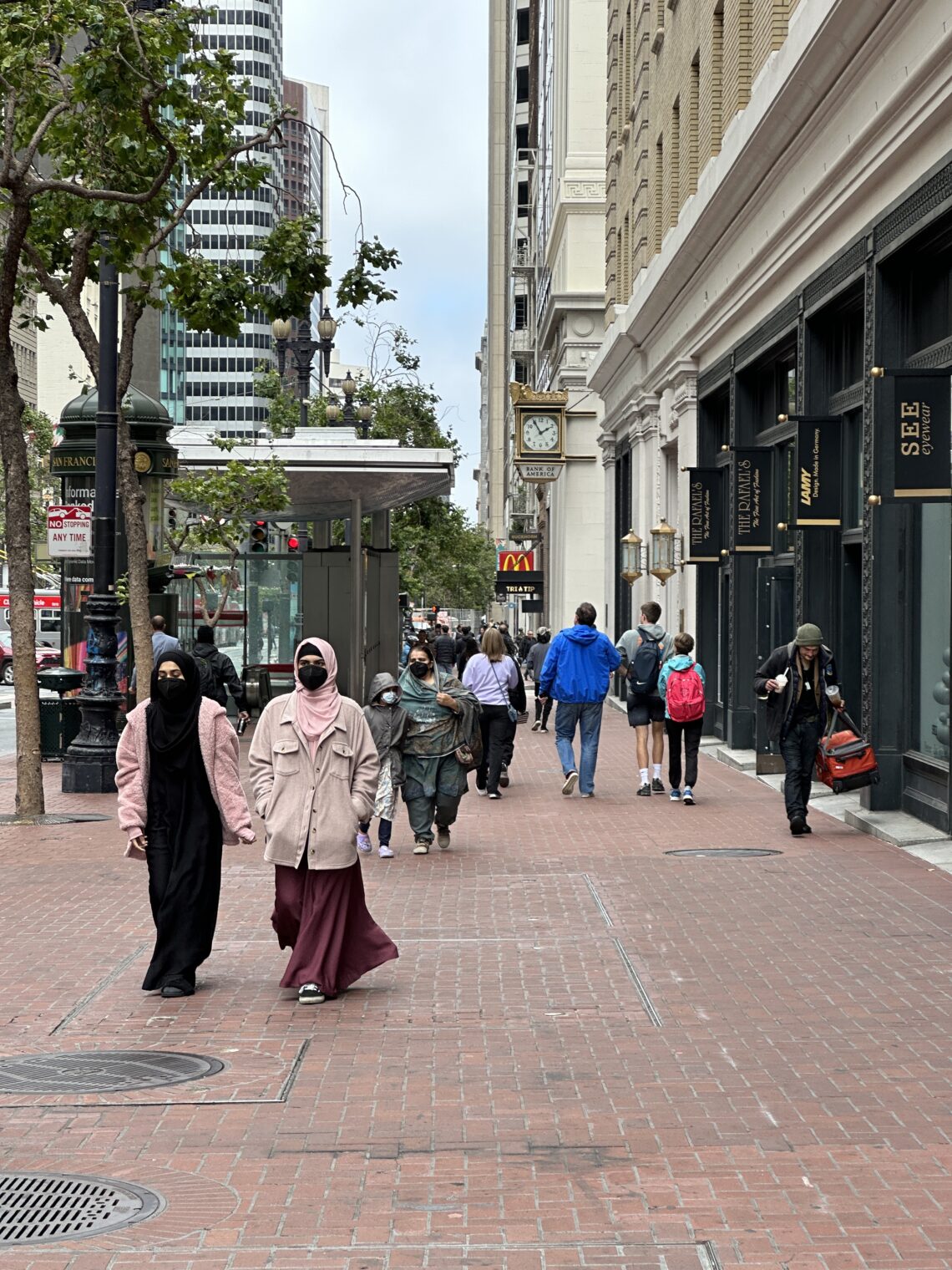
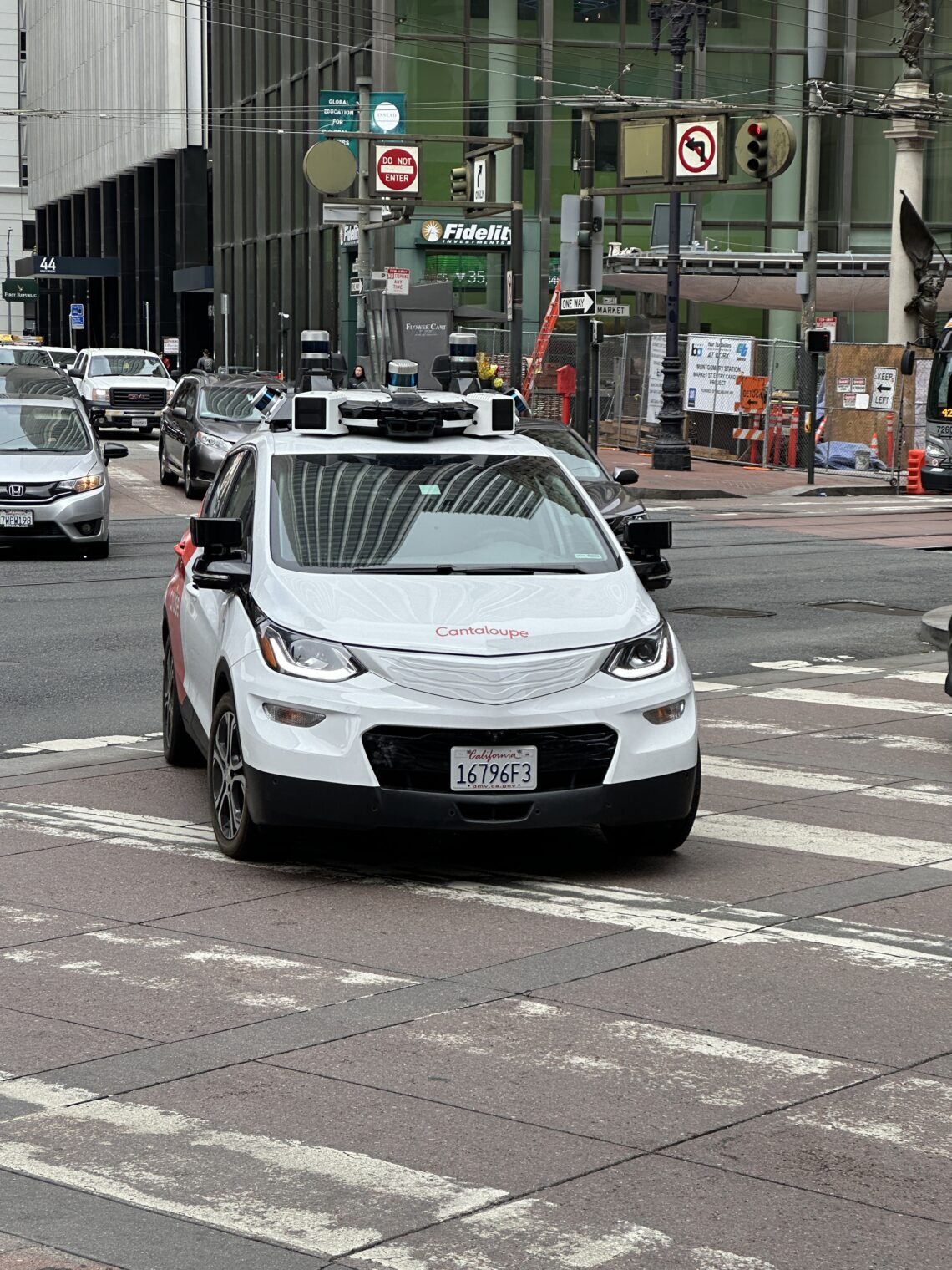
(Why wouldn’t a robotaxi company want office space?)
What if the Islamically covered folks in the above photo want to purchase a notebook?
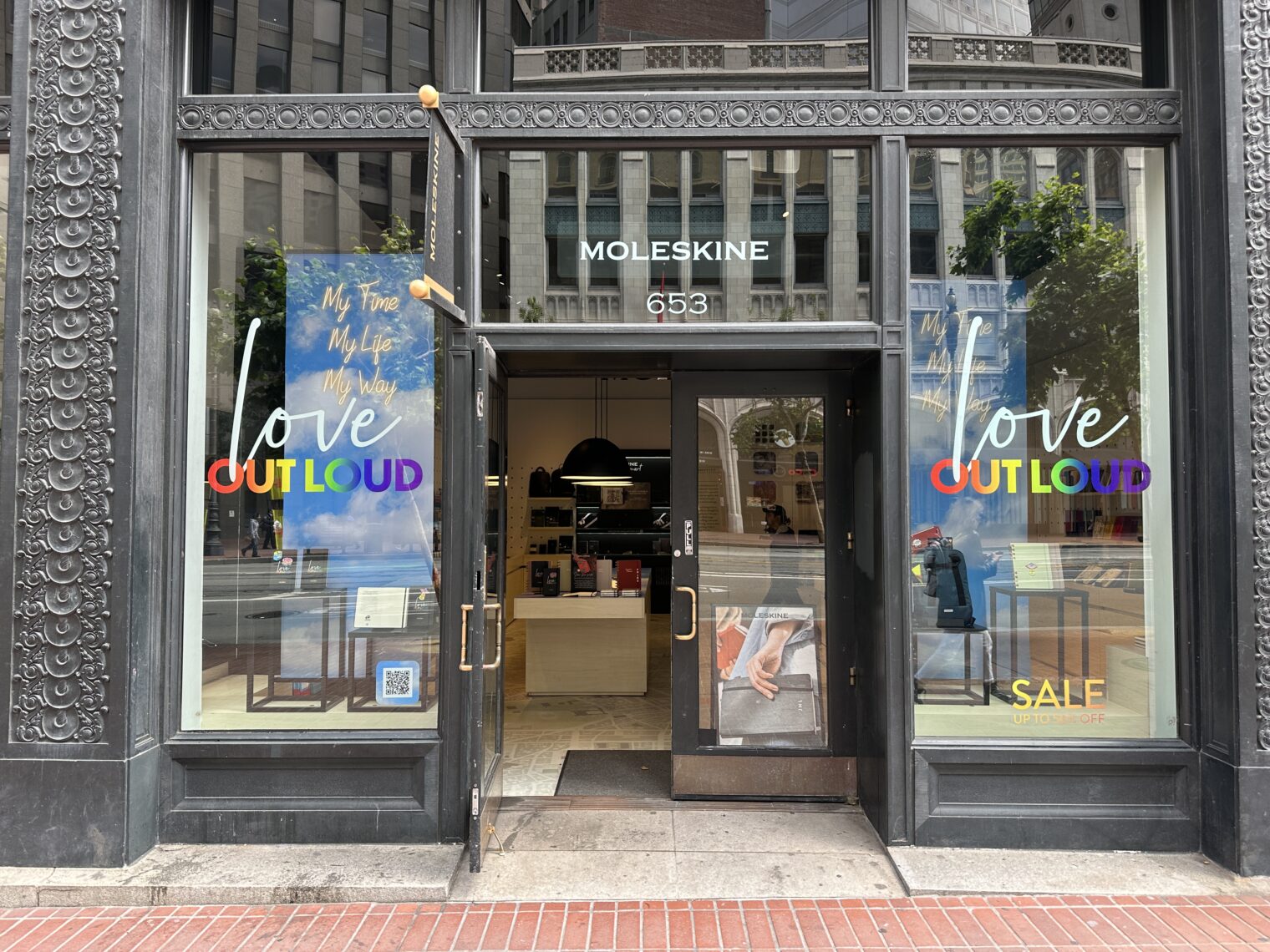



Shopping at Target is a slightly different experience than what I found during a May 2023 visit in Bozeman, Montana. The store offers “secured shelves” that only employees can open. Shoppers were reminded at the rainbow-free front door that they needed to follow the orders of California Covidcrats, “including wearing a face covering,” but the majority of the folks inside the store were mask-free.
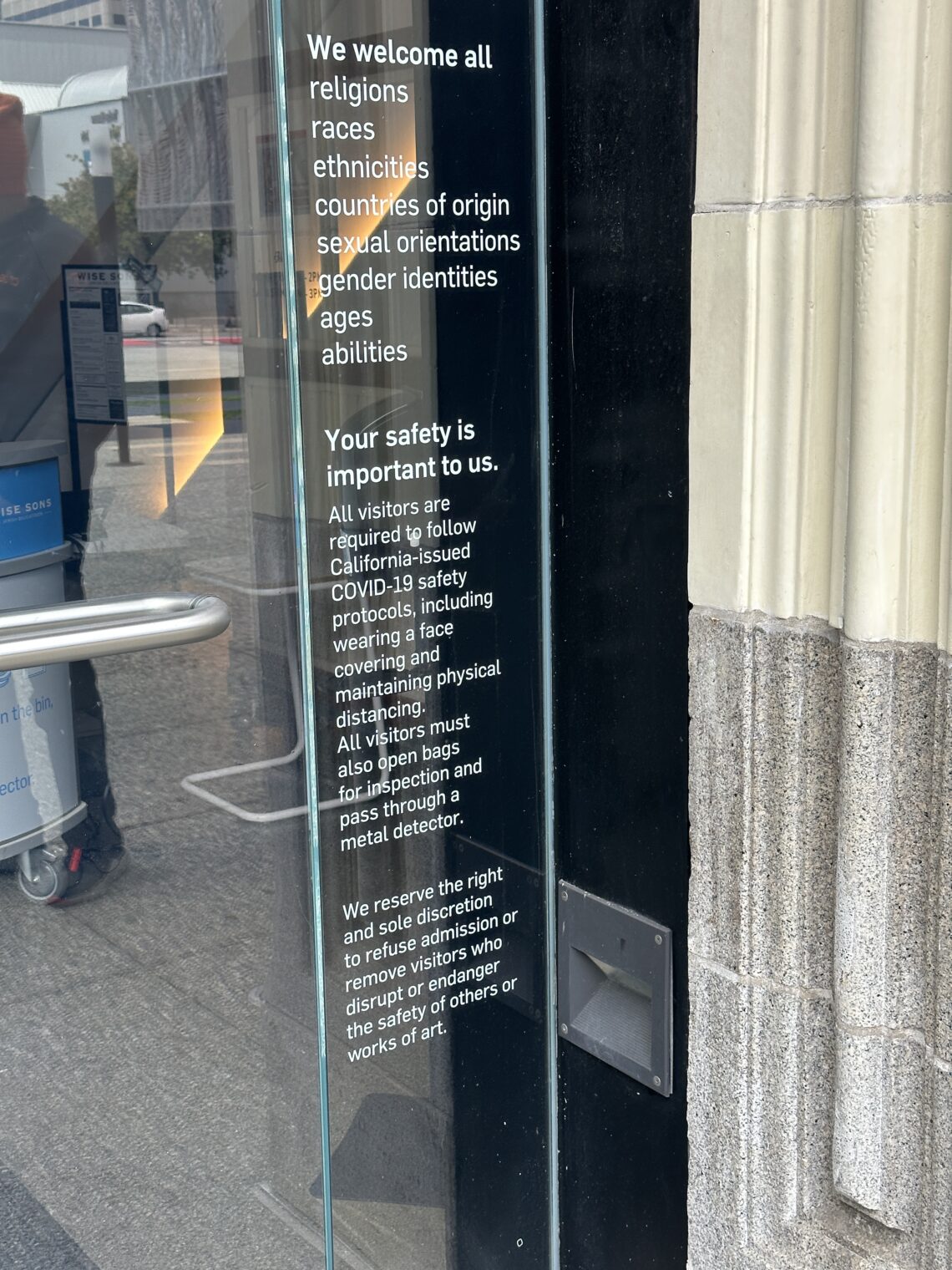
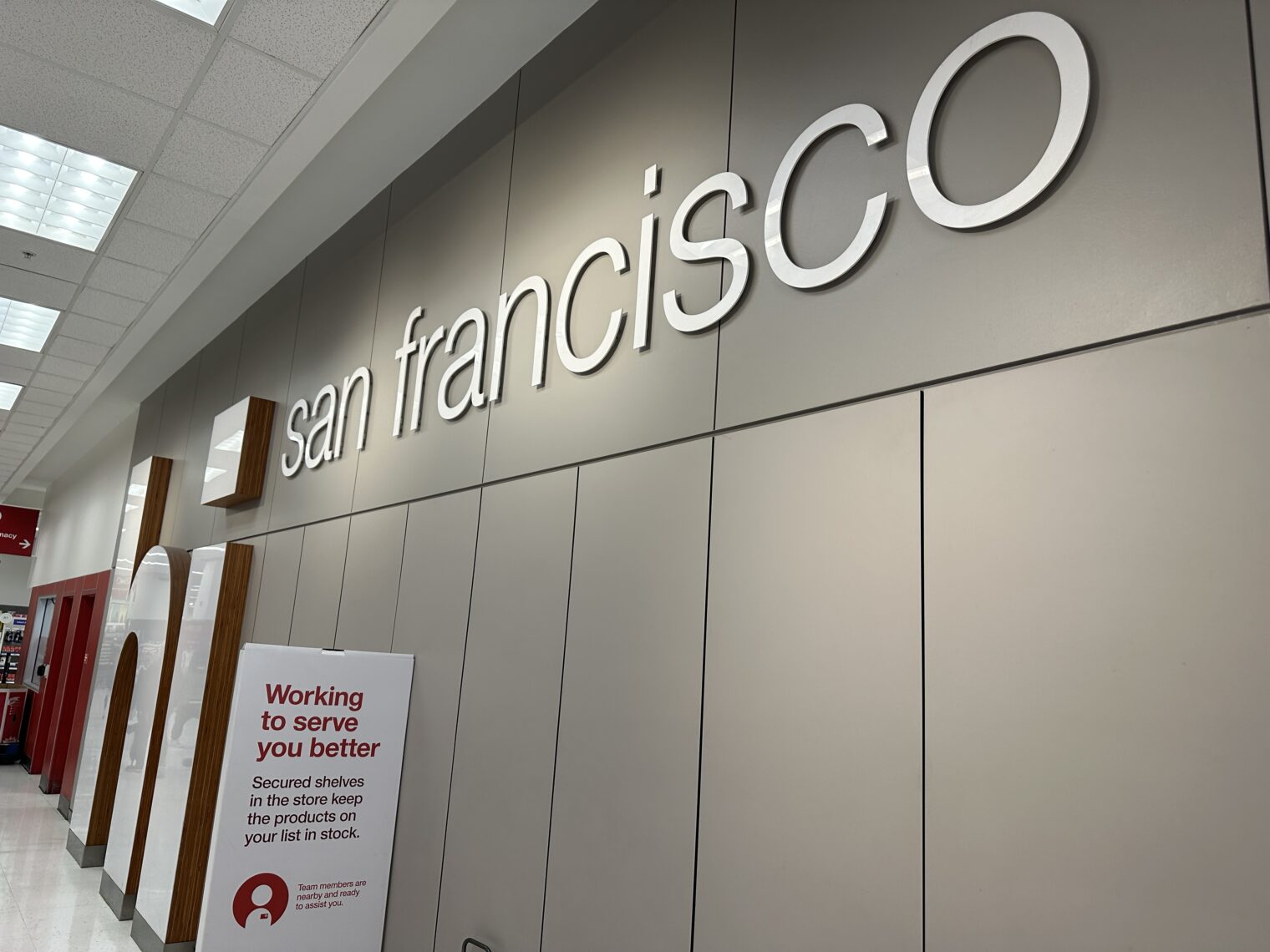
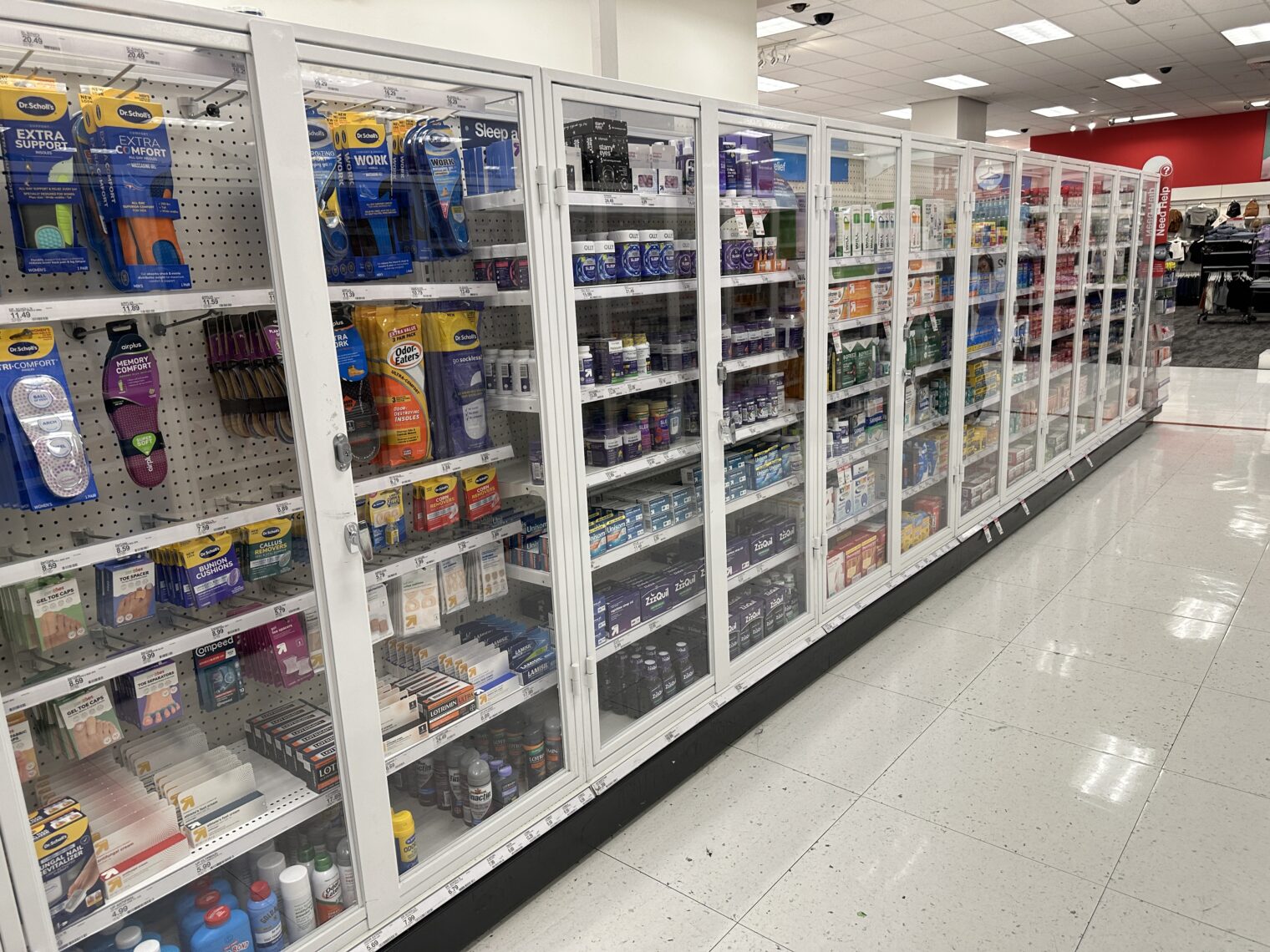
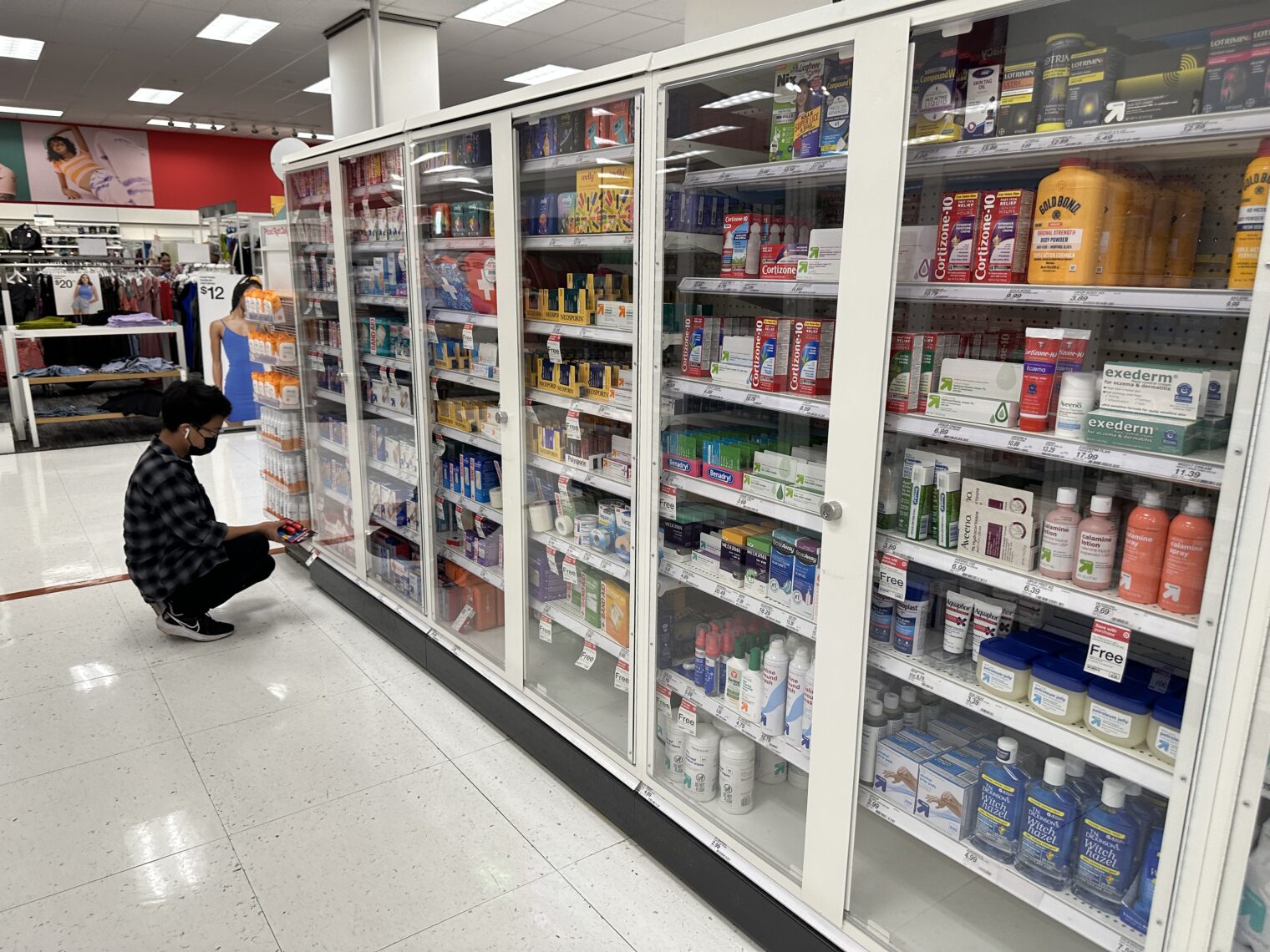
Our next stop was Fisherman’s Wharf. The Musée Mécanique displays a machine that associates providing and using opium with being Chinese:
There were plenty of vacant stores in what used to be a prime tourist area.
The tax-avoidance champions at Patagonia say that our home planet is imperiled. Like other climate change alarmists, they simultaneously fret about comparatively minor issues. If they think the Earth needs to be “saved”, as they write on their front window, why did they buy an “intersectional Pride flag” instead of a solar cell array? Won’t the manufacturing and shipping of the Pride flag actually accelerate climate change? If all humanity will be wiped out soon, along with the planet itself, does it matter whether their LGBTQ+ employees enjoy “equality” at the time that they’re incinerated?
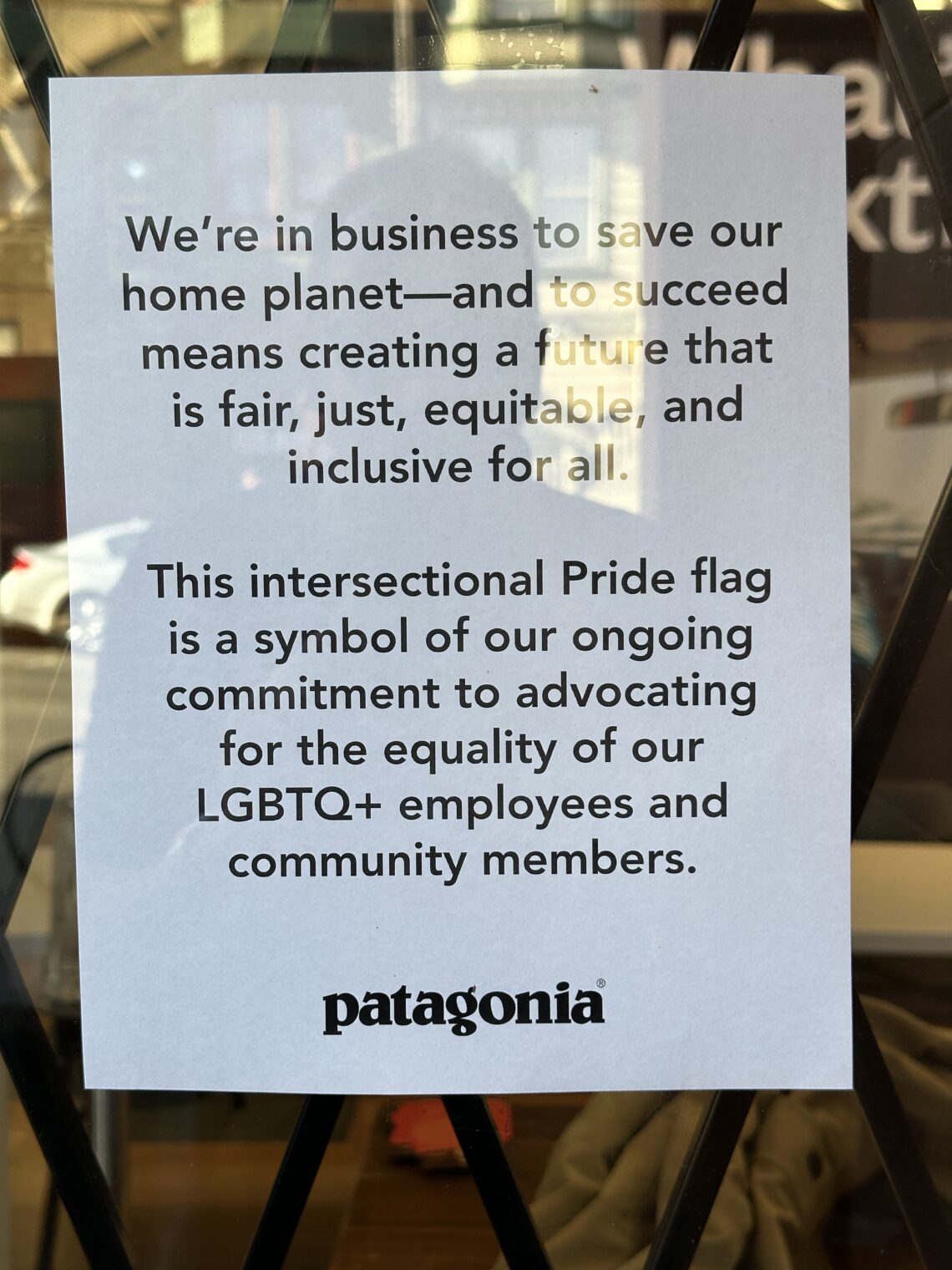
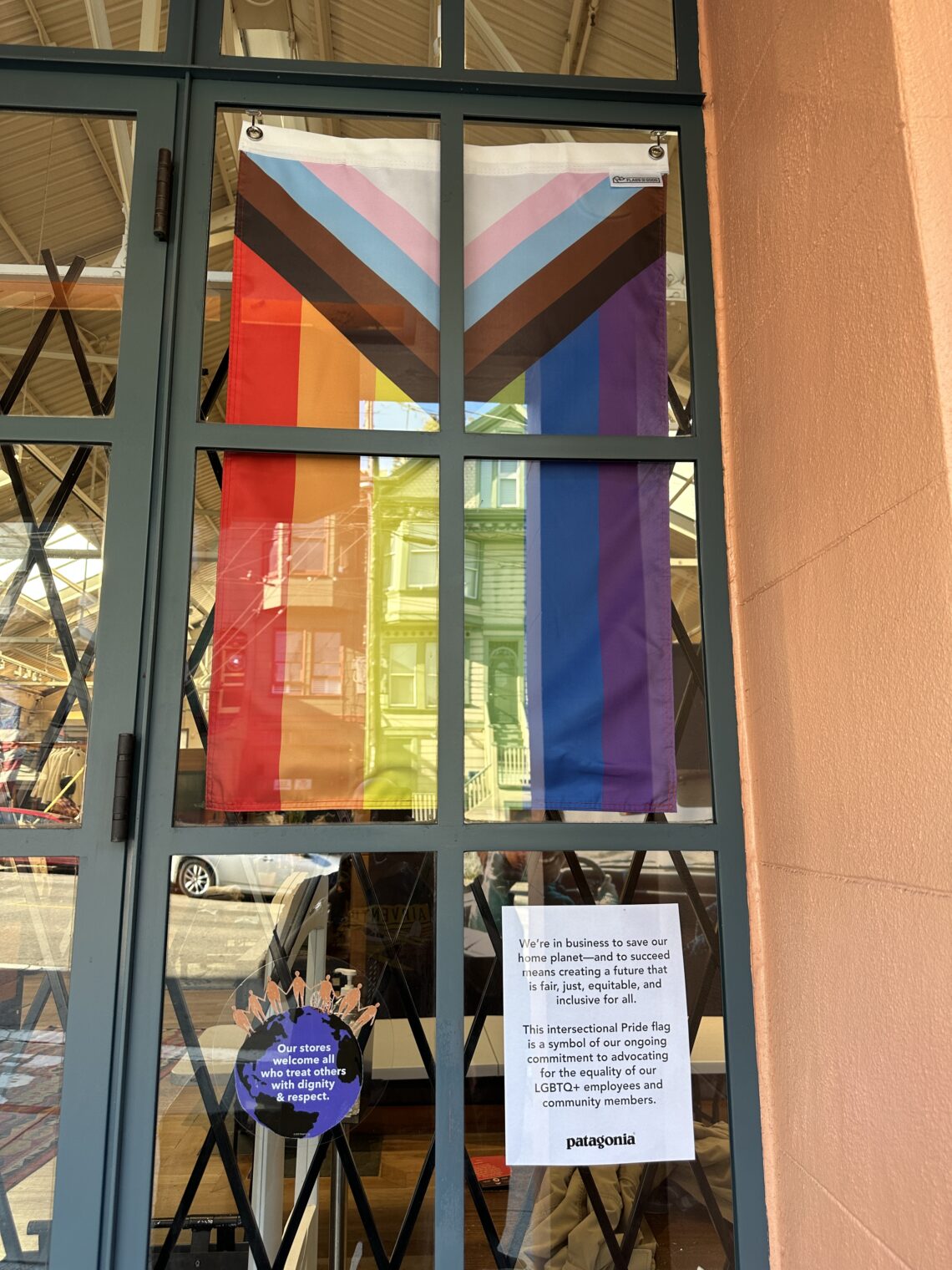
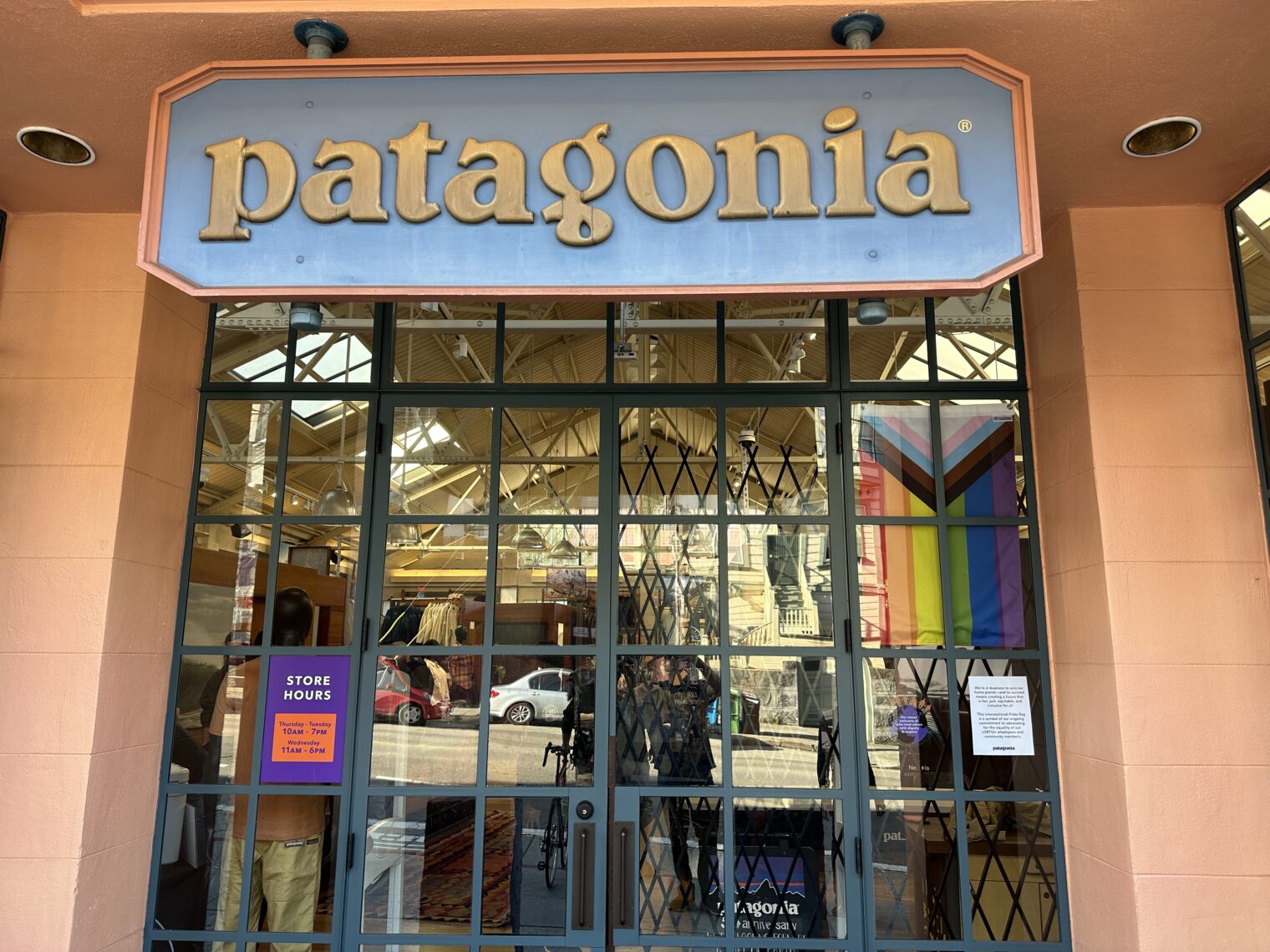
My host lives in North Beach and can purchase equality-enhancing Patagonia clothing all day every day. What if he wants groceries? The Safeway shut down and then most of the other stores in the mini-mall died:
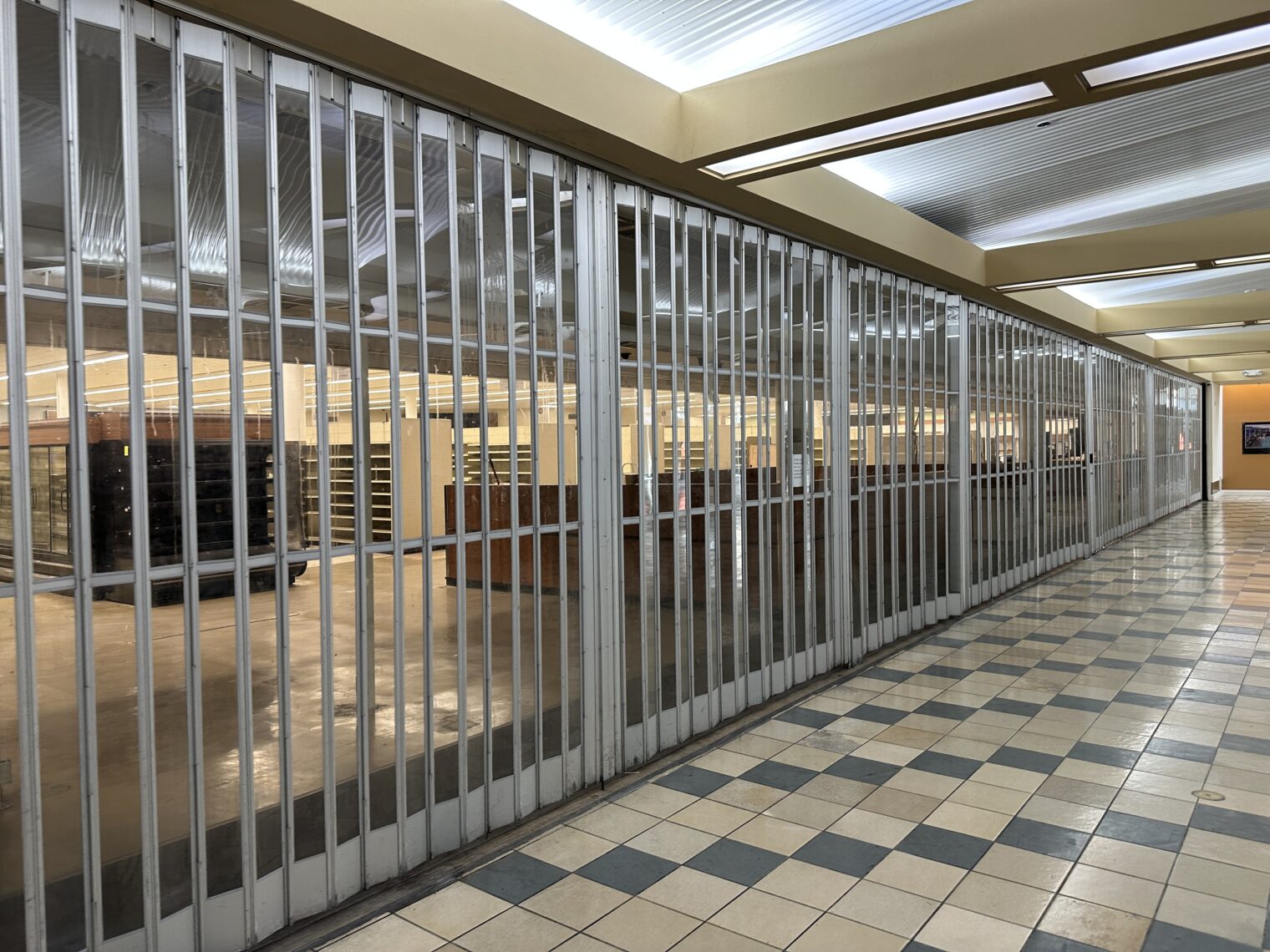
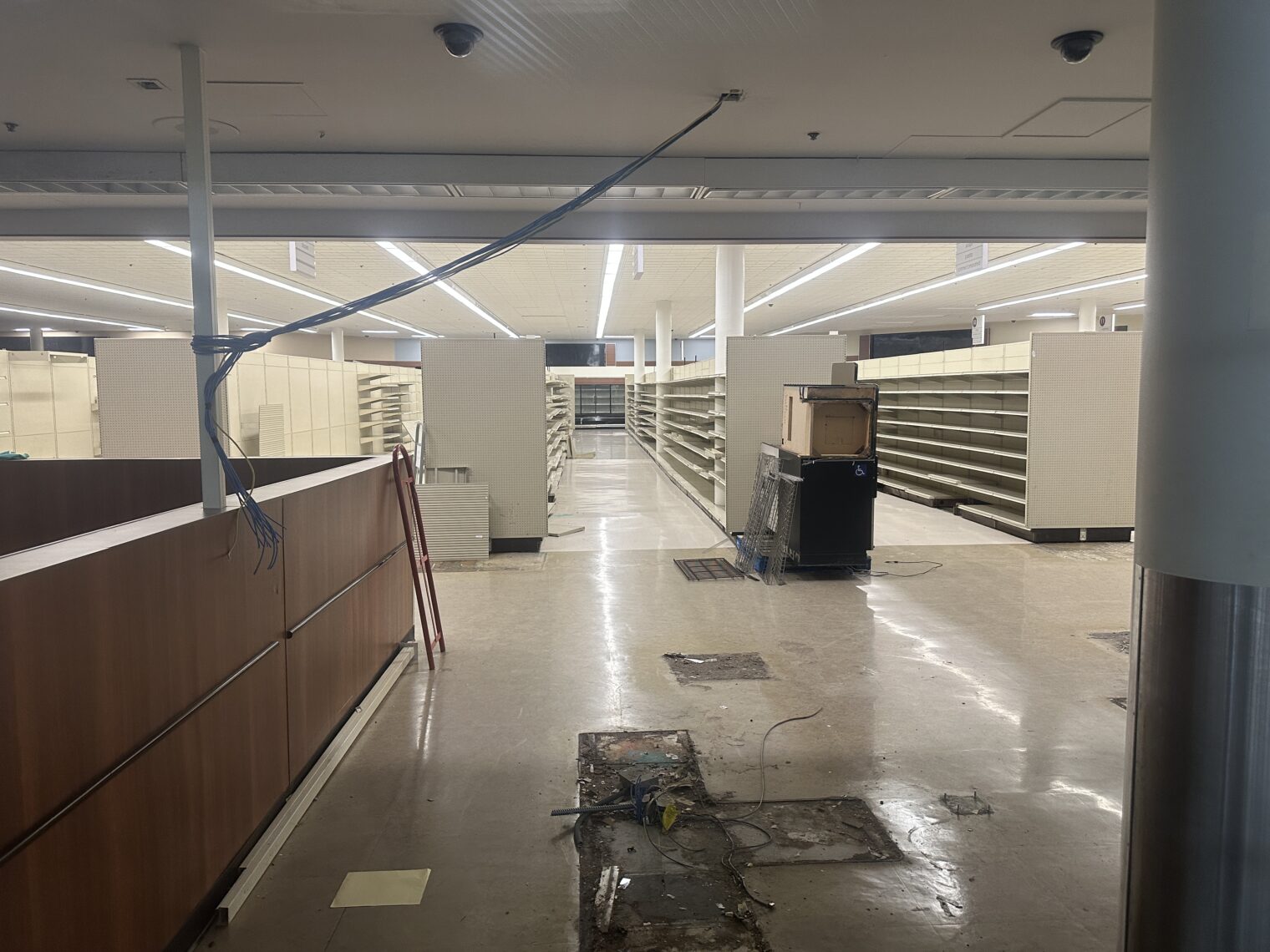
We headed west before my redeye flight from the Harvey Milk Terminal at SFO.
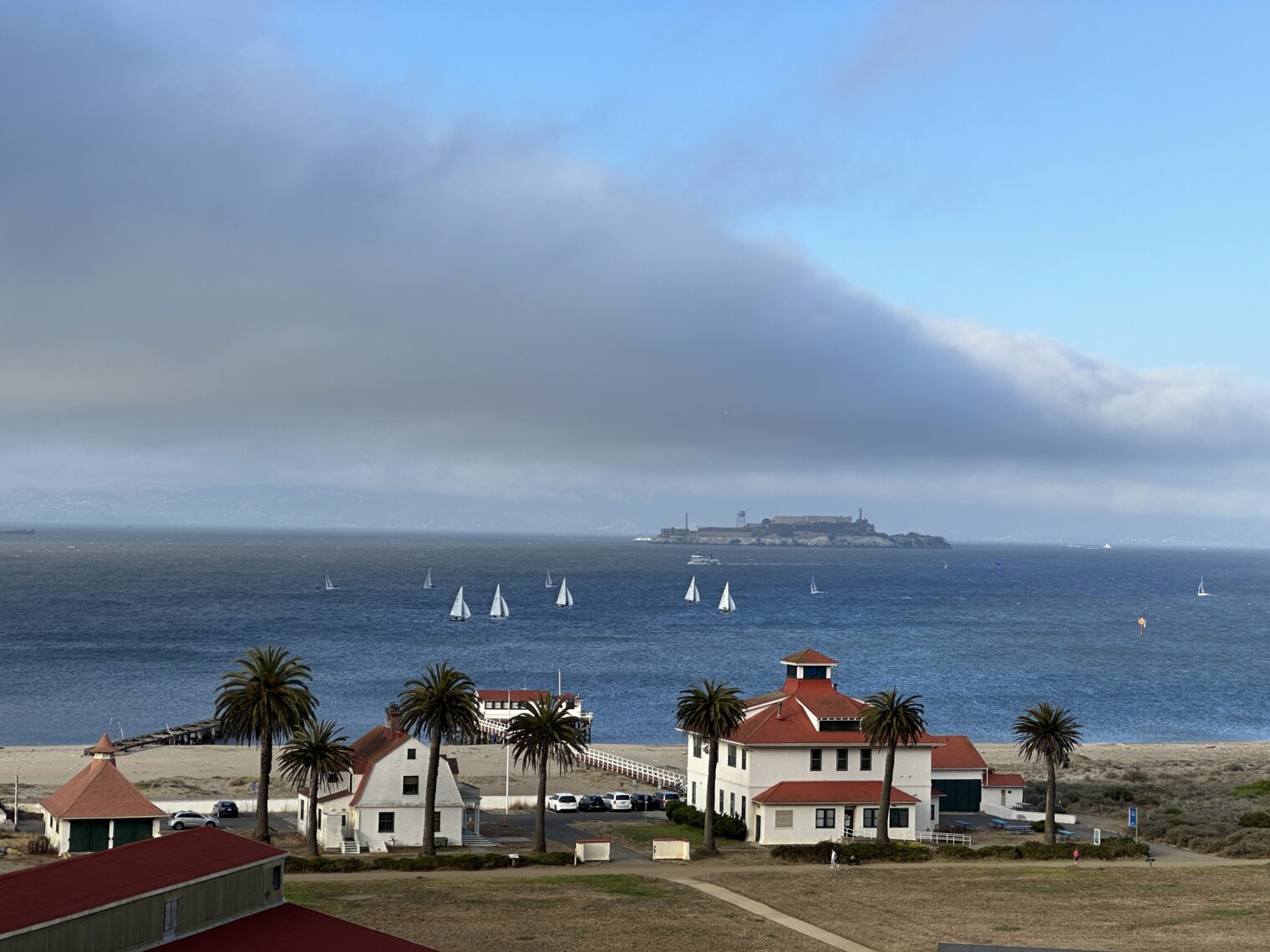

After enjoying observing outdoor masking in the city, we were treated to visions of outdoor masking in the woods:
The beach that would be busy with swimmers near our house was empty due to cold water and big waves:
My friend and I had a great meal at a Korean place (Toyose) in the Sunset:
(The clientele was about 90 percent Asian and the place was full at 8:30 pm on a weekday.)
Circling back to the main theme of this post…. San Francisco still has a lot of creative people who start companies. Space gets tighter in the U.S. with every immigrant who comes across the border. How can city’s real estate not recover?
What if wrong as usual and the righteous stay in the suburbs? (i.e., Detroit and Baltimore turn out to be the models, not Manhattan) Below is what I found on the coffee table of a Democrat who says that his #1 passion is helping people of color. As it happens, 20 years ago he chose to isolate his family from people of color by moving to Piedmont (just above Oakland and a world away as far as the schools are concerned).
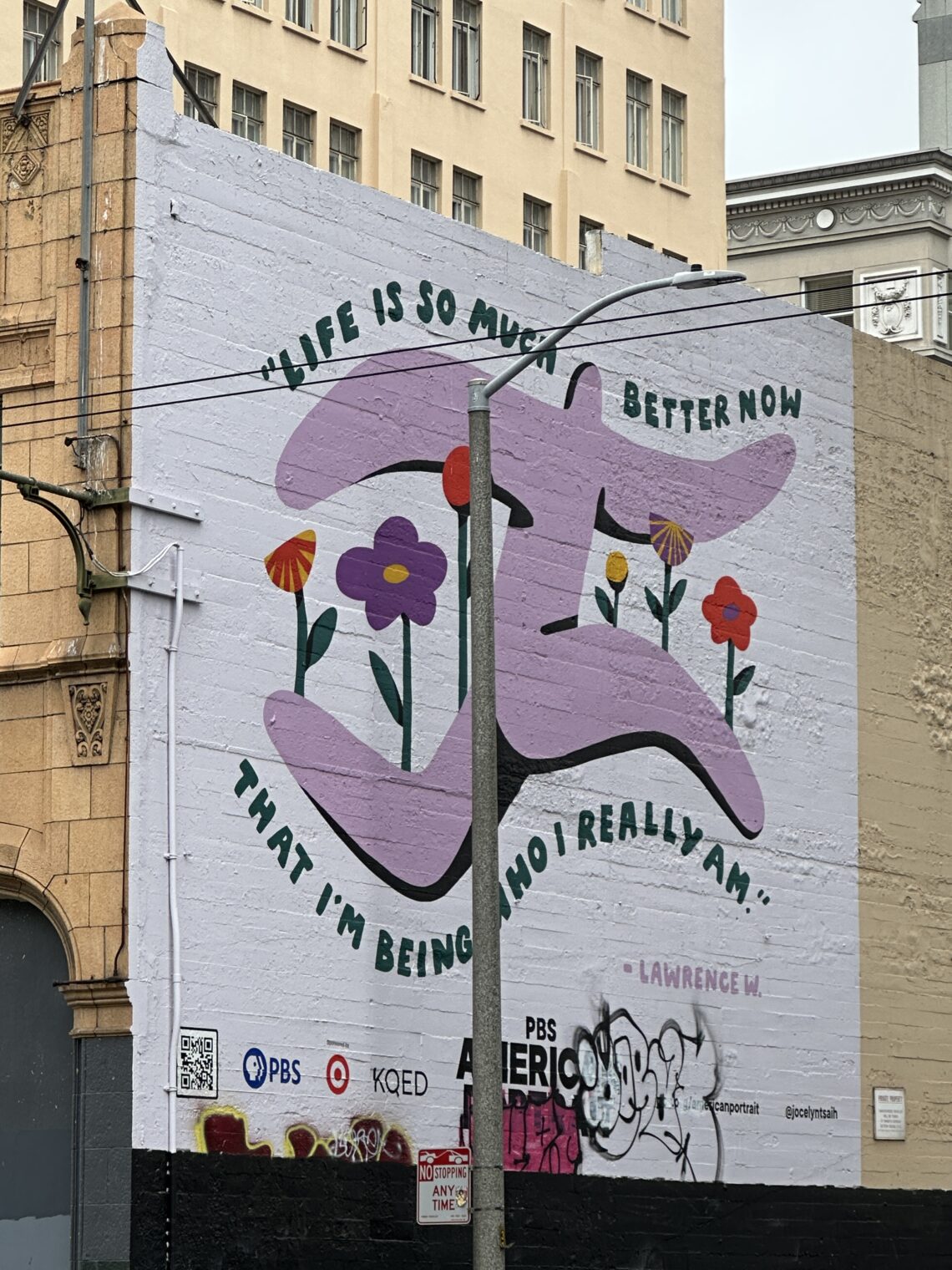
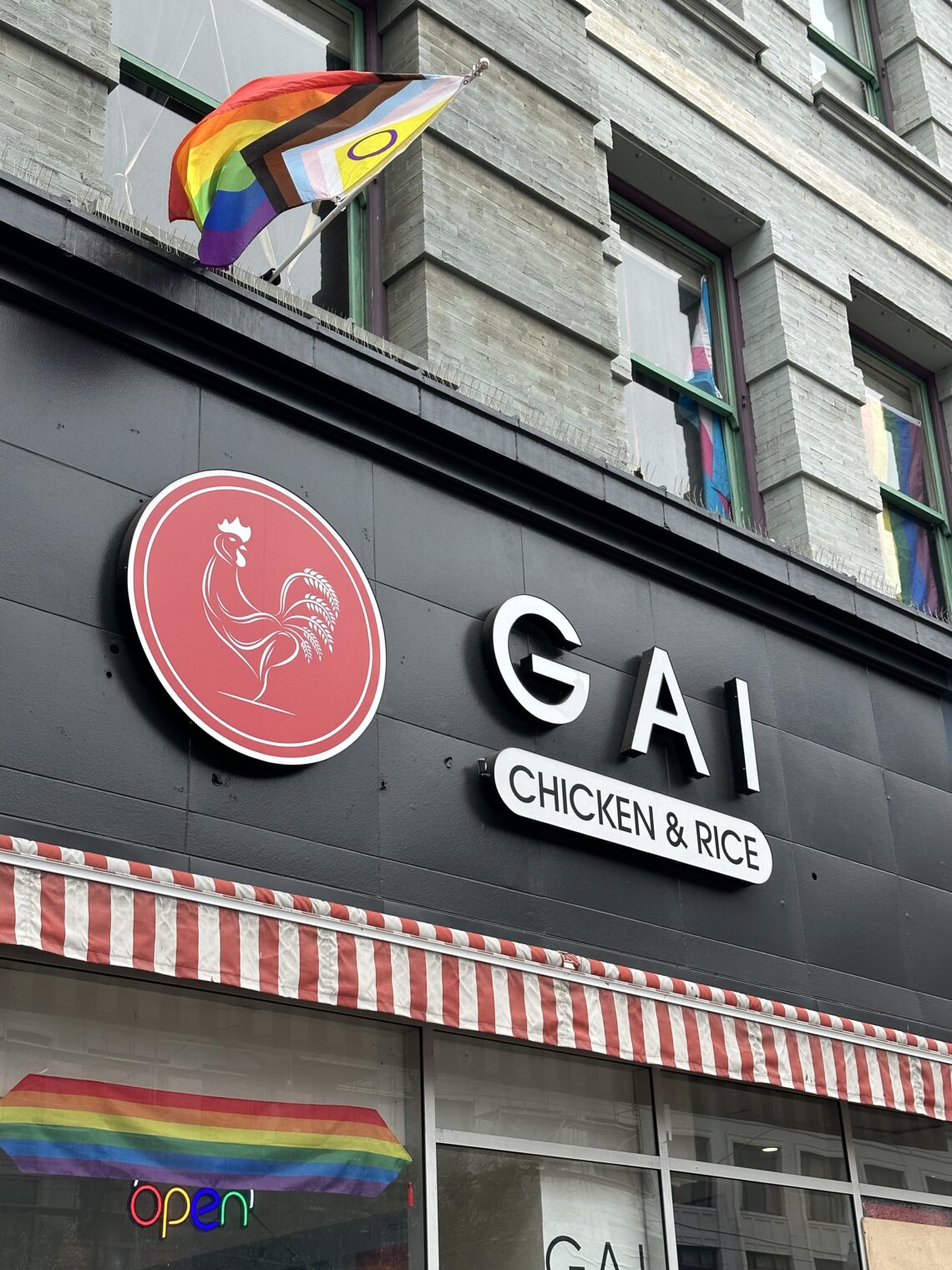




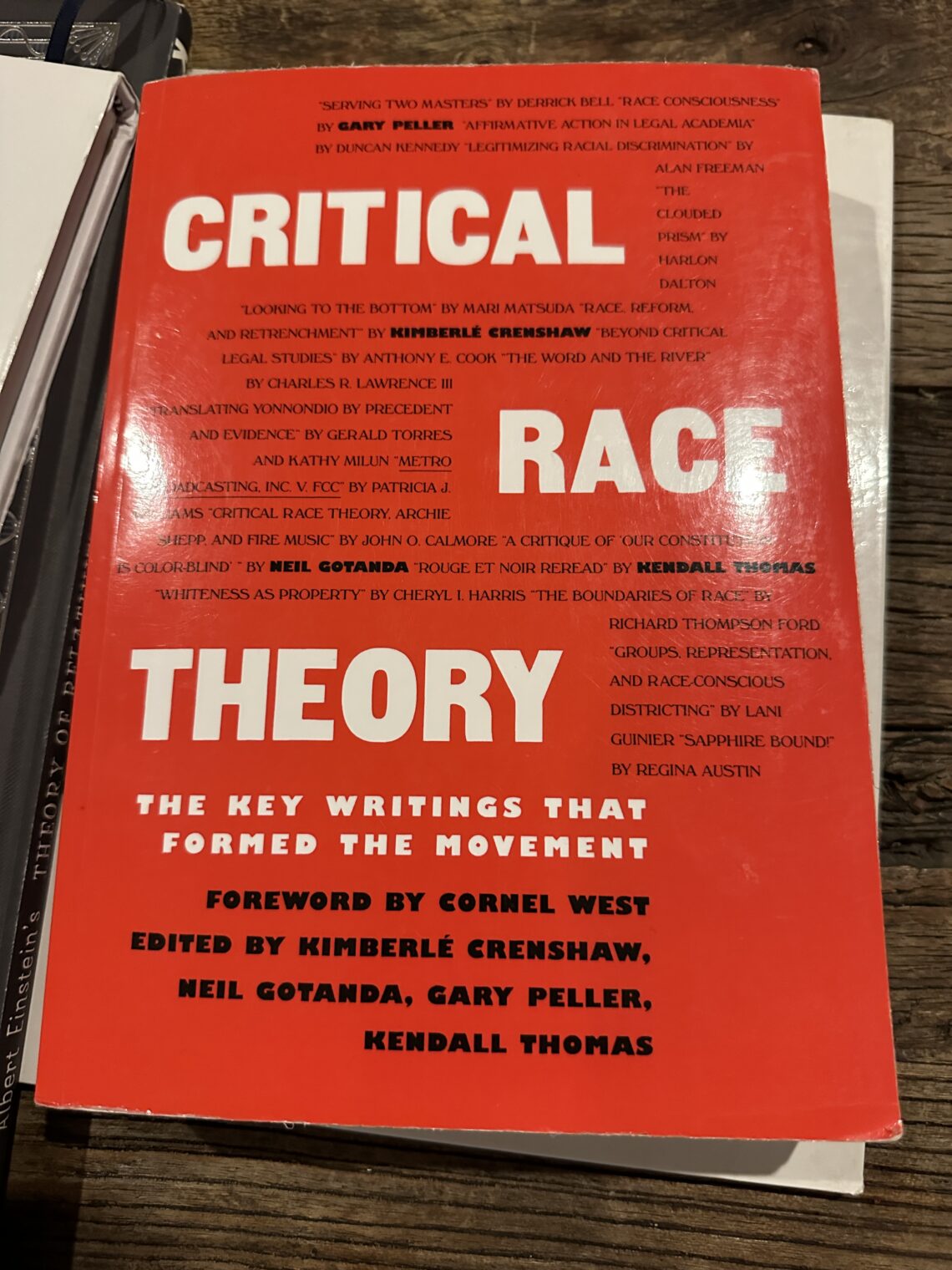
I don’t have an argument for why San Francisco can’t become Detroit.
Detroit was the wealthiest city in America, before the race riots and Asian competition.
There is a good argument that San Francisco has Detroited itself, but the two counters would be good climate and tech still staying in place. Maybe an earthquake or a war is needed to finish it off?
I wonder how much you power you could get putting solar panels in all the south-facing windows of the vacant office buildings? Are they above the fog? Perhaps put windmills at the top and battery packs on the north-facing side?
I’m all for a good deal, but as a novice commercial real estate investor, you are likely to get your head handed to you. Competition is likely to be very rough.
As a former SF resident of 17 years, I’d say what’s broken in SF isn’t that difficult to fix, but watching the dysfunction in SF politics for decades, it’s hard to imagine this getting fixed anytime soon. The San Francisco Board of Supervisors is clueless and has been since at least the 90s.
It’s also a question of whether people will continue to work in skyscrapers in a downtown. Given that almost all the office workers who are working in them spends all day on email and Teams, I am unclear why they need to work in the same building, or why that building couldn’t be located closer to housing. Or for that matter, why the workers can’t work from home.
We’ll see I guess.
Used to go to the north beach Safeway once per week so that’s depressing. The news these days is all about corporate headquarters moving to San Jose as it was 25 years ago. The startup wave of 2014 outgrew the city. The city will return to vogue in 15 years.
Alternate prediction: San Francisco will turn into New Delhi 2.0 = small pockets of extremely expensive residential real estate surrounded by millions of slum dwellers living in poverty.
Who would be those “millions of slum dwellers” living in SF be? Do you expect Mexico to close its border for refugees from the north? And support for poor families dwindle?
Office vacancies in lower Manhattan are running at about 24% and it would appear close to that number in terms of street level retail vacancies. Apparently converting office to residential is not all that easy given the ratio of windows to square footage in the very large office buildings and other factors. Current zoning probably prohibits manufacturing. Local hotels, otherwise vacant, have been commandeered by the city as housing for the illegals at $251 a night plus food. The men seem to spend their time hanging out on the street closely examining their phones while the more industrious women with babies strapped to their backs sell cut fruit off of makeshift stands — though I have never seen anyone buy anything so they too spend their time examining their phones. Probably what they did back home.
> Office vacancies in lower Manhattan are running at about 24%
… but number of cell phones in NYC is down 35% vs pre-covid (down 70% in San Francisco). There’s a lot office of leased office space that may be leased, but isn’t actually occupied.
source: https://downtownrecovery.com/charts/patterns
I’m surprised to see you wearing a Rolex! I always read the tone of this blog as negative towards luxury goods in general.
The Rolex cannot be justified! I got it 20+ years ago when I began flying and wanted a watch with a Zulu time hand. I should have sold it during coronapanic when the price hit 5X what I paid (in nominal dollars).
My only defense is that very few people recognize it as a Rolex. It is an unpopular Explorer II.
The men seem to spend their time hanging out on the street closely examining their phones
obamaphones!
Did a ChatGPT trained on Fox news and Breitbart write this?
People underestimate the work-from-home factor. SF is tech-heavy and leads many trends, so we’ve seen a stronger move from offices to home.
As a result, all sorts of companies are ending their leases and moving heavily to work-from-home.
The neighborhoods which contained primarily business buildings have cleared out.
People from SF who visit NYC say it has largely come back. But their industries are different, and I heard that while there are still people on the streets, the office buildings upstairs are empty.
We’re going to see waves of office buildings default across the country, starting in areas with the most knowledge workers in work-from-home friendly fields. That’s SF exactly.
I’m not dismissing the crime and drug problems, but it’s worth imaging these two cases:
1) SF with current (high) drug and crime problems but little or no work-from-home
2) much reduced crime but these current high work-from-home levels
And it should be clear that #2 is the big explanation here.
Fox News and Breitbart are predicting a full economic recovery in San Francisco? Citation needed.
This just in: the elites are ready to clear out SF!
https://sfstandard.com/2023/08/22/san-francisco-is-prepared-to-take-homelessness-case-to-supreme-court-says-mayor/
San Francisco Mayor London Breed is fired up about a federal injunction that restricts the city’s ability to clear homeless encampments, saying the city is prepared to take the case to the Supreme Court if necessary
During a meeting at the San Francisco Chamber of Commerce on Tuesday, Breed said that the city has to be “able to clear the streets.”
“I get that people suffer from mental illness,” Breed said. “I get they suffer from addiction. And I know that those things are complicated. But if we have a place for people to move, you should not be forced to just allow people to be on the sidewalk.”
(So San Francisco will be able to dump the unhoused in Fresno soon enough!)
Not sure what are chances of Supreme Court ruling that creates minimal net worth or unacceptable looks or smell legal test for public property use. I.e, for NYC it would be only landlords or tenants could urinate on the street? Since it is no longer a crime in NYC?
Assuming that high court knows what word woman means
California has some of the most *insightful* laws and yet they want to add more of it. Here is a recent example:
“Southern California’s summer of discontent — marked by a series of work stoppages from hotels to Hollywood — has inspired labor-supporting Democrats in the state Legislature to try and change the law so striking workers can get unemployment checks while they picket for better pay and working conditions.” [1]
If they pass this law, then all that workers have to do is:
a) demand more $$, if demand is rejected,
b) go on strikes and get paid for demanding more $$,
c) goto (a)
This is great, why I’m not moving to California is beyond me!
[1] https://apnews.com/article/california-unemployment-workers-strike-231c27a95c7e19ed439530904af7e6c5